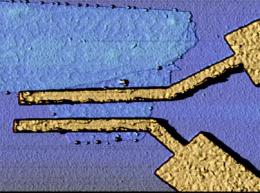 Turns out viruses are good for more than just killing cancer cells. Researchers at MIT have developed a method whereby viruses are coated with iron phosphate, then attached to carbon nanotubes, thus creating the building-blocks of nanoscale electrical components:
Turns out viruses are good for more than just killing cancer cells. Researchers at MIT have developed a method whereby viruses are coated with iron phosphate, then attached to carbon nanotubes, thus creating the building-blocks of nanoscale electrical components:
This advanced ‘bio-industrial’ manufacturing process, which uses biological agents to assemble molecules, could help to evolve key energy material components (e.g. cathodes, anodes, membranes) used in batteries, fuel cells, solar cells and organic electronics (e.g. OLEDs).
It’s interesting to see how researchers are making use of the native biological territory instead of reinventing the wheel when it comes to nanotechnology – using viruses to make nanomaterials to make power cells.
 Graphene: a material consisting of
Graphene: a material consisting of